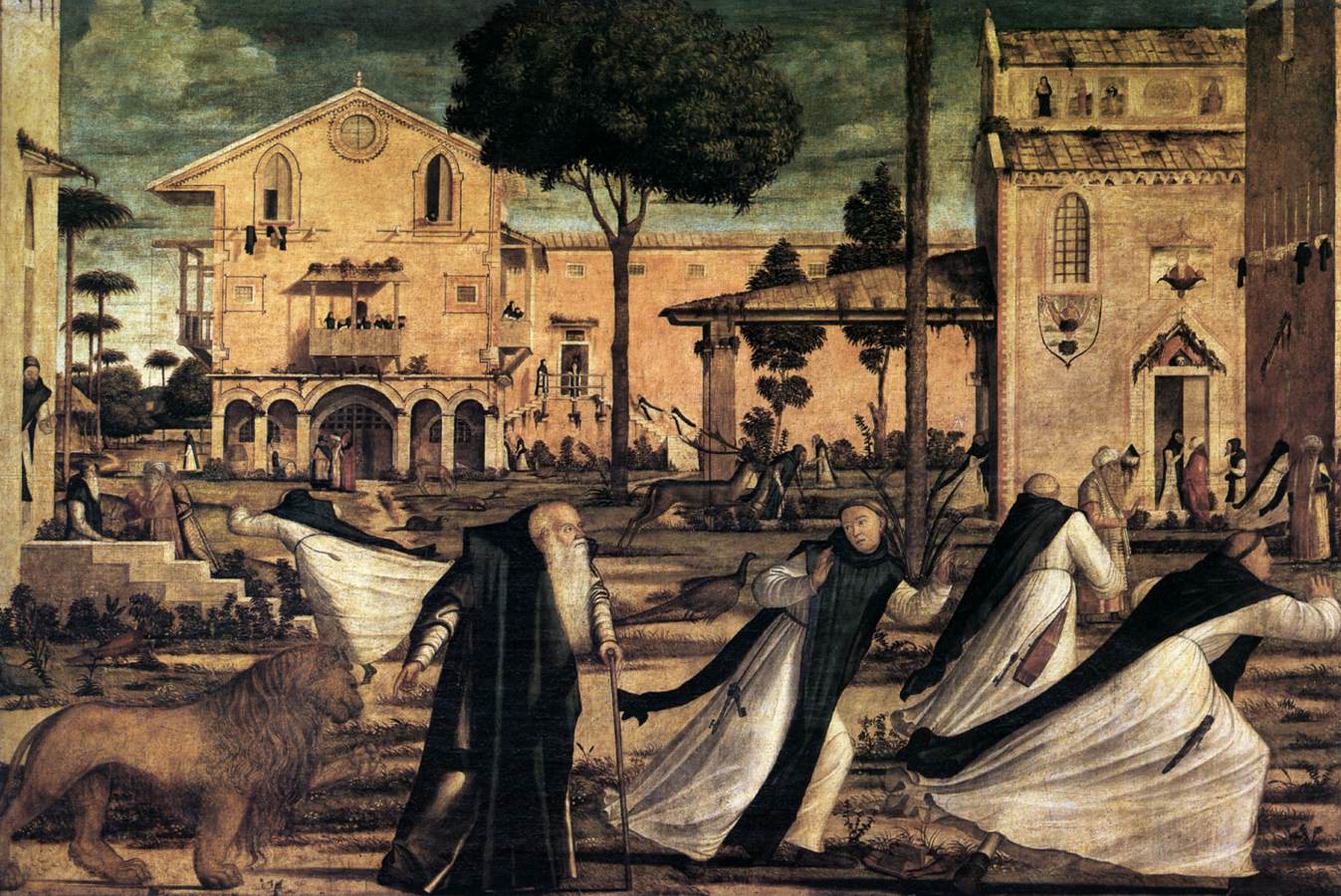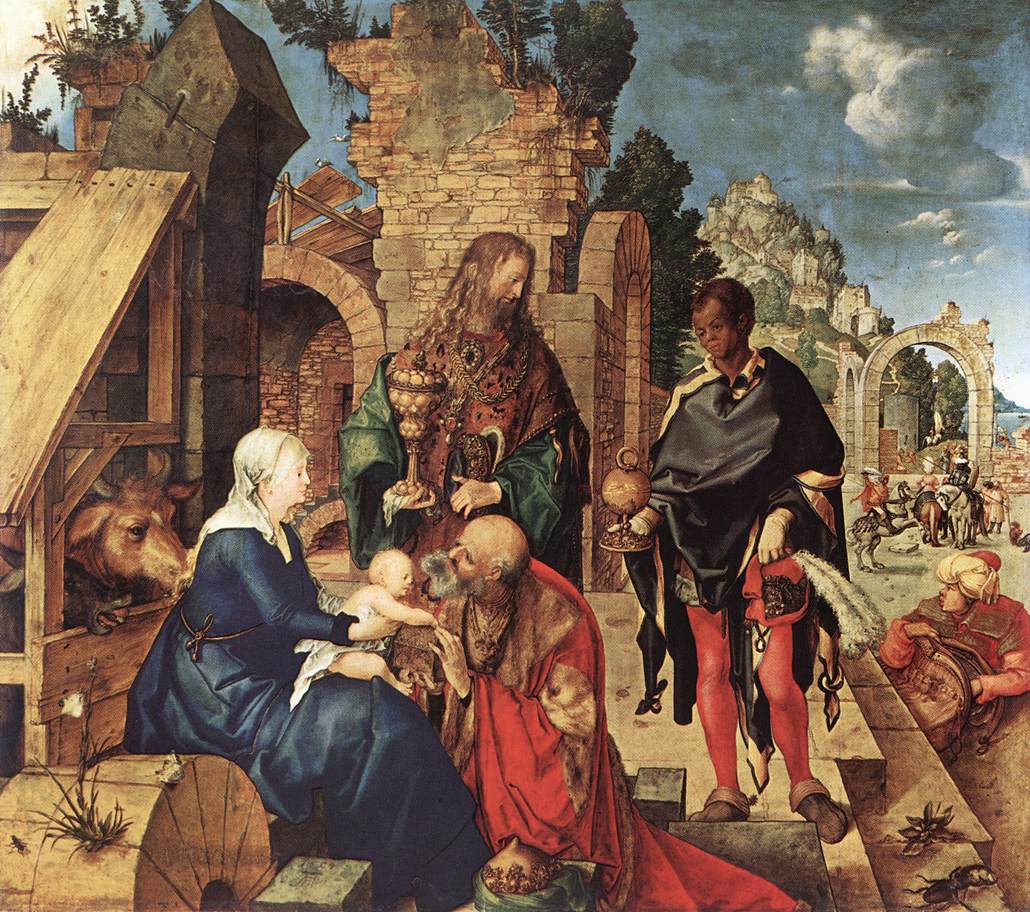Author: dist (83.102.161.---)
Date: 11-19-04 16:38
Купон #3.
Ван Эйк прокололся еще с апельсинами. А вот теперь еще и с тюрбаном:
Man in a Turban (1433)

Напомню, что тюрбан узнали в Европе лишь спустя 100 лет:
turban ("t3:b@n), n.
Forms: a. 6 tolipane, -epan, tolliban, tulbant, (tal-), 67 tuliban, tolibant, -e, tulipan, 7 tulipant, -e, tullipant, -band, tul-, (tel-)-bent, dulipan, tulban; b. 6 torbant, turribant, turbanto, 69 turbant, -band, 67 -bante, -bent, 7 -bond, -bat); c. 7 turben, -bine, -bane, 6 turban.
[Altered form of Pers. dulbaЏnd or doЋlbaЏnd, in vulgar Turkish pronounced tulbant, tul(i)pant, toli-, whence OIt. tolipante, tolipano, mod.It., Sp., Pg. turbante; obs. F. tolliban (16th c.), tulban, turbant (Cotgr.), F. turban; early mod.Du. turbant (Kilian), Du. tulband, Ger., Da., Sw. turban. It is not clear in which language the change of tul- to tur- took place; it may have been in S.W. India, or in Portuguese; we find it first in Hickock’s translation of Cesar Frederick, who cites it from the Portuguese Indies. Tulipant, turbant, were the most usual English forms in 17th c.; turban was used by Johnson and Gibbon. See also tulip, which goes back to the same word.]
1. a. A head-dress of Muslim origin worn by men of Eastern nations, consisting of a cap round which is wound a long piece of linen, cotton, or silk.
(In quot. 1561, the tarboosh or fez as distinct from its wrapping.)
a.1561 A. Jenkinson Voy. (Hakl. Soc.) I. 132 Upon his head was a tolipane with a sharpe end standing upwards halfe a yard long, of riche cloth of golde, wrapped about with a piece of India silke of twentie yards long, wrought with golde, and on the left side of his tolipane stood a plume of feathers.
1585 T. Washington tr. Nicholay’s Voy. iii. xx. 108 Kinsemen of Mahomet..doe weare a green Tulbant.
Ibid. iv. iv. 116 Their custome is to weare a Talbant high topped before.
1588 in Hakluyt Voy. (1600) III. 821 Died linen cloth folded vp like vnto a Turkes Tuliban.
1589 Puttenham Eng. Poesie iii. xxiv. (Arb.) 291 The Turke and Persian to weare great tolibants of ten, fifteene, and twentie elles of linnen a peece vpon their heads.
1596 Danett tr. Comines (1614) 296 They were not vppon their head such a great roule of linnen as the Turkes doe, called Tolliban.
1597 Gerarde Herbal 117 Tulipan, Tolepan [see tulip 1].
1600 J. Pory tr. Leo’s Africa iii. 160 On their heads they weare a blacke dulipan.
1603 Knolles Hist. Turks (1621) 201 Upon his tombe lieth..a little Turkish tulipant, much differing from those great turbants which the Turks now weare.
1613 Purchas Pilgrimage iii. xi. 255 With a great Tullipant on his head.
Ibid. xiv. 267 These weare greene Tulipans, which colour none else may weare, and that onely on their head.
1617 Moryson Itin. iii. 174 A round globe, which in their tongue is called a Tulbent.
1652 H. L’Estrange Amer. no Jewes 57 A Cap of linnen somewhat full like a Turk’s Turband or Tulliband.
1653 Greaves Seraglio 129 The name of the stuff (as we call ours lawn, cambrick, holland, &c.) is Telbent; whence we (falsly) call that which a Turk wears a Turbant, using the name of the stuff for the thing made up.
1662 J. Davies tr. Olearius’ Voy. Ambass. 314 The Coeffure of the Men, which they call Mendils, and the Turks, Tulbans, or Turbants, is made of Cotton cloath, or some silk Stuff,..of several Colours.
[1686 tr. Chardin’s Coronat. Solyman 40 A Dhul-bandt (which our Writers..erroneously call a Turbant).]
1688 R. Holme Armoury iv. xi. (Roxb.) 440/2 In Egypt the great Sultan used
a Tulipant or Turbat made of three score or more elles of thin stuffe diuersely folded.
b.1588 T. Hickock tr. Frederick’s Voy. 5 The Torbants are made in Diu.
1596 Spenser F.Q. iv. xi. 28 Old Cybele,..Wearing a Diademe embattild wide With hundred turrets, like a Turribant.
1598 R. Haydocke tr. Lomazzo ii. 124 Some of them beare blewe turbantes;..the Iewes beare them yeallow.
1599 Hakluyt Voy. II. 168 With their turbents very white and cleane.
1607 R. C[arew] tr. Estienne’s World of Wonders 235 A Turkish turbant [margin or tolibante].
1611 Shakes. Cymb. iii. iii. 6 The Gates of Monarches Are Arch’d so high, that Giants may iet through And keepe their impious Turbonds on.
1652 Turband, 165386 Turbant, 1688 Turbat [see a].
1697 W. Dampier Voy. I. xv. 427 They wear no Hat, Cap, nor Turbat, nor any thing to keep off the Sun.
1710 Addison Tatler No. 161 39 Ignorance with a Turband upon her Head.
1735 Johnson Lobo’s Abyssinia, Voy. v. 30 He [the King].. with a Turbant on his Head, to which were fastned some Rings.
1839 Monteith in Madras Jrnl. Lit. & Sc. X. 162 Dressed in their blue clothes and white turbands.
c.1597 Gerarde Herbal 117 Turban, Turfan [see tulip 1].
1623 Cockeram, Turbine, a thing of linnen which the Turks weare on their heads.
1624 Bedell Lett. iii. 78 There were also Turkish Turbanes, and Diadems of diuers fashions.
1687 A. Lovell tr. Thevenot’s Trav. iii. 37 The turban worn in the Indies is commonly little.
1755 Johnson, Turban, turbant, turband.
1774 Goldsm. Nat. Hist. (1776) II. 77 The size of the head is encreased by a great variety of bandages, formed into a turban.
1788 Gibbon Decl. & F. lvii. V. 667 His ample turban was fashioned in the shape of a crown.
1803 Med. Jrnl. X. 281 Oriental travellers, who exchange their hat for the turban, experience it to be a much cooler and more agreeable covering.
b. As the symbol of Islam, or of those who profess it.
1610 Marcelline Triumphs Jas. I 74 Go generous Race, go gather Laurels..chase the Turbants from those Provinces.
1660 N. Ingelo Bentiv. & Ur. ii. (1682) 55 Their Emperour commanded only the Turbants to be beaten.
1693 Mem. Cnt. Teckely i. 13 The Turk..does not force the Transylvanians to take up the Turban.
1753 Hanway Trav. (1762) II. v. iii. 139 As he refused to wear the turbant, his younger brother..offered himself in his stead.
1812 Byron Ch. Har. ii. lxxix, Though turbans now pollute Sophia’s shrine, And Greece her very altars eyes in vain.
1878 L. Villari Machiavelli (1898) I. iii. 160, I was better fitted for the turban than the cowl.
c. A figure or representation of a turban, e.g. on Muslim funeral monuments. Also in Her.
1687 A. Lovell tr. Thevenot’s Trav. i. 224 Five great Sepulchres, in one whereof a Basha is Interred, having his Turban cut in Marble, at one end of his Tomb.
1717 Lady M. W. Montagu Let. to Abbй Conti 29 May, They set up a pillar with a carved turbant on the top of it.
|
|






